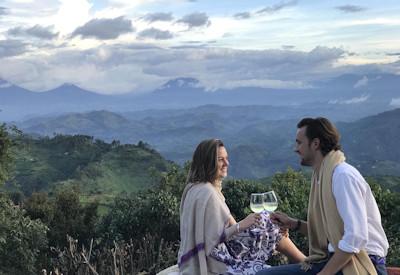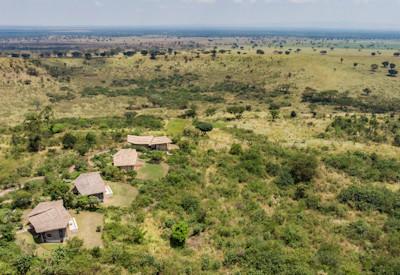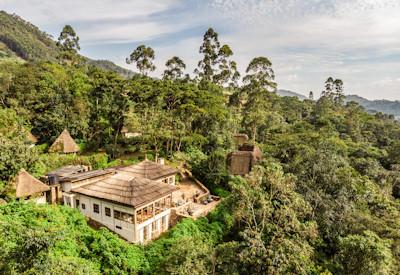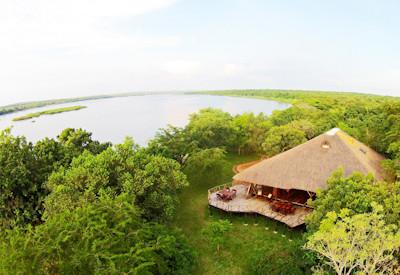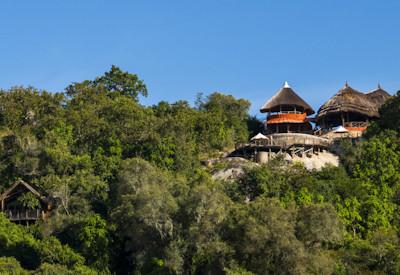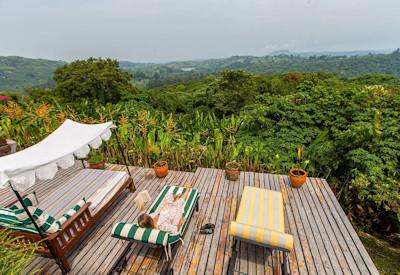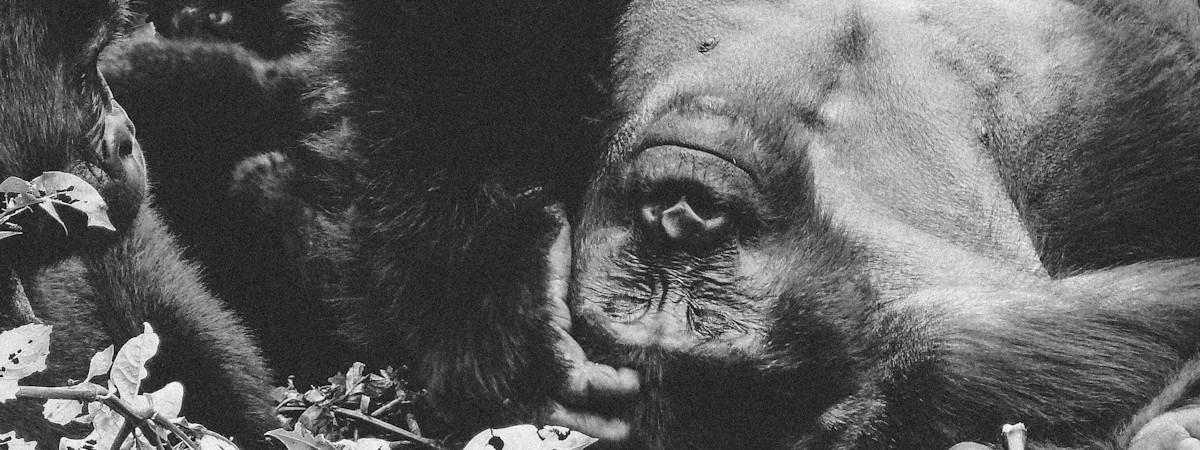
The group was so named by the UWA (Uganda Wildlife Authority) Rangers because they were found in the Mubare hills, deep in the Bwindi Impenetrable National Park. The official habituation (effectively getting used to human presence) of this gorilla group started on the 15th of October 1991 and lasted for two years. They received their first official (and paying) visitors on the 13th of October 1993.
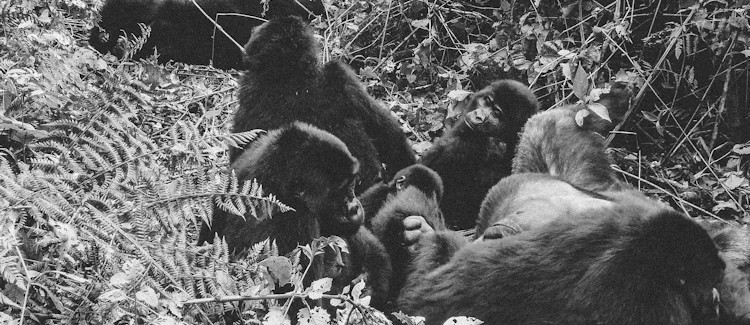
Like all families, their fortunes fluctuate over time. At the start of the habituation process, this family group had 12 members. Their numbers peaked at over 18 and they are currently at a lowly 5 members. The group was led almost immediately by the powerful alpha male, silverback gorilla named Ruhondeza. In the local Rukiga dialect, Ruhondeza means "sleepy fellow" and was meant to signify his attitude to life. He was powerful and fought many violent encounters with other wild gorillas. The family lost members due to these attacks as well as through internal confrontations with lesser males challenging his authority. This "sleepy attitude" indicated a lack of consistent supervision of the group which resulted in fragmentation of the family and hence the lowly numbers of today.
In March 2012, the family group was attacked by an unhabituated silverback male. Time had caught up with Ruhondeza and he was too old to fight back and protect his family. He was consequently forced out of his family group and then lived a solitary existence until his death three months later on the 27th June 2012 in Rubona village. He was buried at Buhoma Bwindi Park headquarters by the UWA rangers. A monument is planned for his grave. He was almost 50 years old.
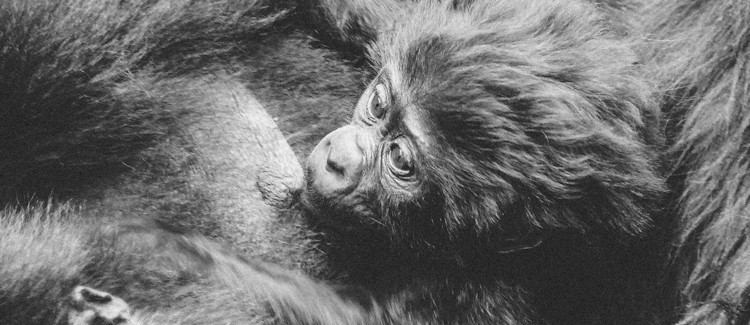
The present group (Gorilla Family) of five is led by the leading silverback Kanyonyi, one of Ruhondeza's sons. Kanyonyi was so named after his place of birth, a neighbouring hill. Kanyonyi means a bird in the local dialect.
The legacy of this group is vast. Gorilla tourism has become an international conservation success story. Mountain gorillas have shown a significant increase in their population. There are today 11 gorilla families in Uganda and 10 in Rwanda which has been habituated and is available for trekking. Several social and scientific discoveries have been made along the way. It was previously thought for example that gorillas only fed on the pith of the banana plant. By observing the Mubare group, it was observed recently that they removed the peels and ate the fruit before it was ripe.
Gorilla trekking is a strictly controlled activity. You are only allowed to approach them from a certain distance and can only stay for one hour. The cost of this activity is not cheap. A one day permit costs $600 per person but this restricts numbers whilst adding much-needed funds to provide security for these animals as well as the maintenance of the national park infrastructure.
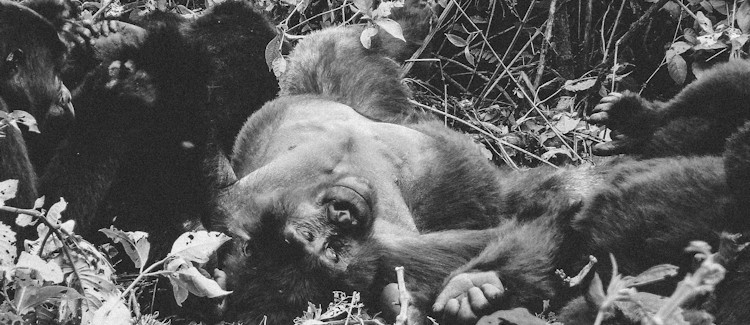
So twenty years on, we raise our glasses and say cheers to the Mubare family for allowing us humans to watch one of the greatest sights in the animal kingdom.
See more Safaris In Uganda here.
A Special Gorilla Family
Clouds Mountain Gorilla Lodge
Clouds Mountain Gorilla Lodge is a captivating retreat near Uganda's enchanting Bwindi Impenetrable Forest. Engage in thrilling gorilla trekking adventures, cultural visits, and guided forest walks while enjoying gourmet dishes and fine wines.
With eco-friendly practices, panoramic views, and dedicated personal butlers, the lodge offers a harmonious blend of luxury and natural beauty. This extraordinary lodge, recognized with prestigious awards, guarantees an unforgettable and cherished stay for discerning explorers.
Kyambura Gorge Lodge
Kyambura Gorge Lodge is a safari lodge located in Queen Elizabeth National Park, Uganda. With breathtaking panoramas of the surrounding savannah and gorge, guests can stay in one of the eight beautifully designed luxury bandas. Indulge in locally-inspired cuisine, relax by the sparkling swimming pool, and enjoy game drives and bird watching in the national park.
After a day of adventure, unwind with spa treatments in this serene haven amidst majestic landscapes.
Elephant Plains Lodge
Elephant Plains Lodge is a luxury safari lodge located in Queen Elizabeth National Park, Uganda. With eight enchanting private cottages offering captivating park views, the lodge provides easy access to the national park. Guests can indulge in a culinary journey, enjoy the refreshing swimming pool and vibrant bar, and embark on thrilling game drives and chimpanzee tracking.
Engaging with the local community and discovering traditional salt mining practices are additional highlights. This pristine wilderness offers a haven for unforgettable photographic safaris.
Volcanoes Bwindi Lodge
Volcanoes Bwindi Lodge, located in Bwindi Impenetrable National Park, Uganda, offers a captivating retreat in the heart of nature. Immerse yourself in the enchanting beauty of the Bwindi Impenetrable Forest, witness the vibrant ecosystem, and enjoy the comfort of luxury bandas with stunning forest views.
Indulge in locally-inspired cuisine, unwind at the Humula Forest Spa, and embark on unforgettable gorilla trekking experiences. Discover the wonders of nature, luxury, and vibrant flavours at Bwindi Lodge.
Bakers Lodge
Bakers Lodge, located in Murchison Falls National Park, is a charming safari-style lodge nestled along the southern bank of the majestic Nile River. With direct river access, serene shaded trees, and vibrant wetland areas, it offers a tranquil retreat for nature lovers.
Bakers offers sweeping views of the Nile, adorned with nesting sites for elegant egret birds, playful elephants, and graceful hippos. Surrounded by lush wilderness, this luxury lodge is the perfect gateway to Uganda's abundant wildlife and stunning landscapes.
Mihingo Lodge
Mihingo Lodge is a serene oasis nestled in Lake Mburo National Park, Uganda. With breathtaking views of the savannah and 12 tented grass thatched roof suites that blend comfort and nature, it offers an intimate experience of the surrounding environment.
Visitors to the park can embark on exhilarating game drives, guided walks, or even horseback safaris, immersing themselves in the wild. For those in search of both opulence and a profound connection with nature, Mihingo Lodge stands as an idyllic sanctuary. Unwind by the infinity pool, while marveling at the captivating wildlife that surrounds you.
Paraa Safari Lodge
Discover the majestic beauty of Murchison Falls National Park at Paraa Safari Lodge. Nestled in the captivating northwest of Uganda, Paraa offers breathtaking views of the River Nile as it journeys from Lake Victoria to Lake Albert.
With elegant rooms, tranquil surroundings, and thrilling adventures, Paraa Safari Lodge provides an extraordinary experience like no other. Unwind, immerse yourself in nature, and create memories to treasure forever.
Ndali Lodge
Ndali Lodge, nestled near Uganda's wild Kibale National Park, offers a unique experience combining luxury and adventure. With breathtaking views of Nyinambuga Crater Lake and the Rwenzori mountains, the ten quaint en suite luxury cottages provide a refuge from the ordinary.
Guests can indulge in fresh cuisine and impeccable service while exploring the untamed joys of the park, including chimpanzee tracking. Whether seeking adventure or tranquillity, Ndali Lodge is the perfect getaway.

